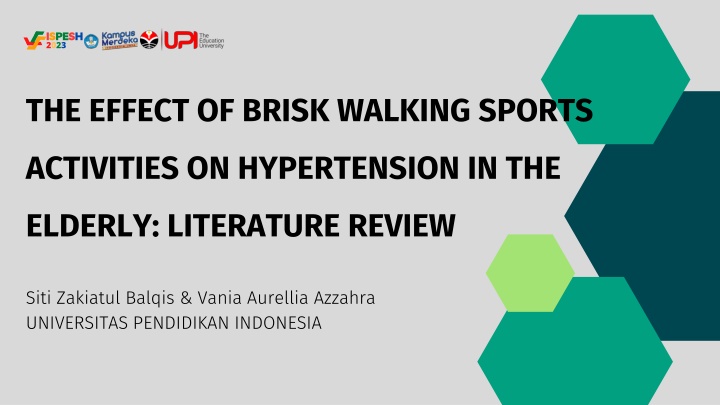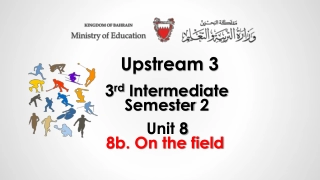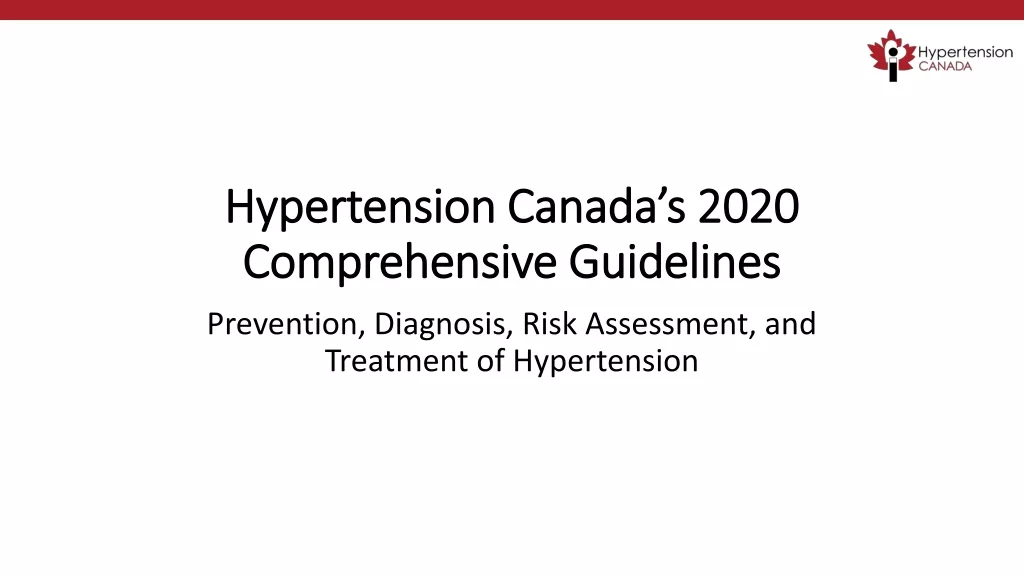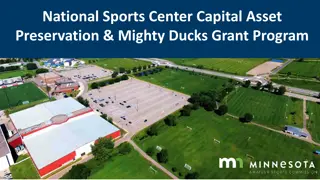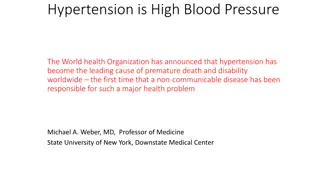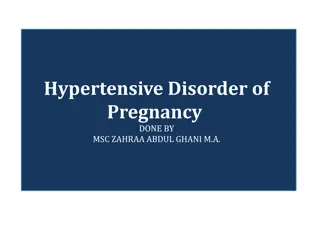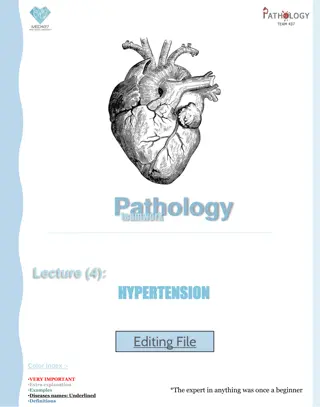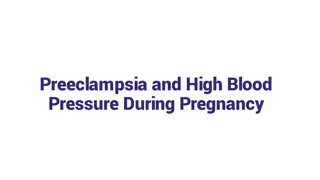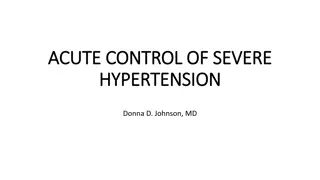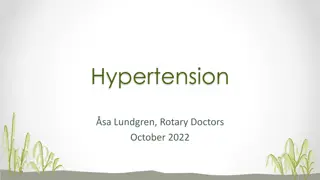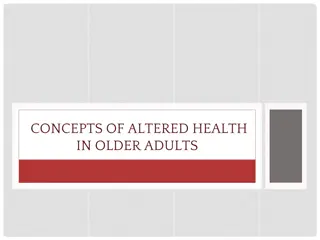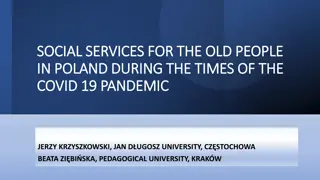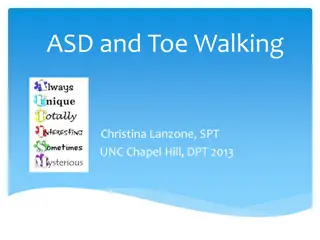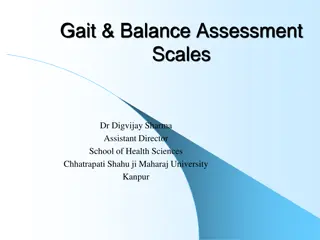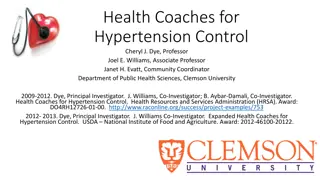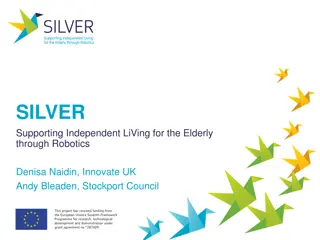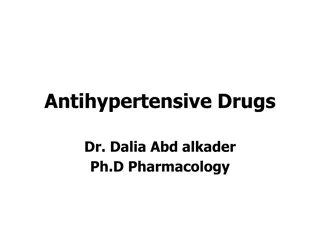The Effect of Brisk Walking Sports Activities on Hypertension in the Elderly: Literature Review
Hypertension in the elderly is a serious issue, with risks of heart attack, stroke, and more. This literature review examines the relationship between brisk walking and hypertension management in the elderly, providing insights on activity frequency and duration for maximum health benefits.
Download Presentation

Please find below an Image/Link to download the presentation.
The content on the website is provided AS IS for your information and personal use only. It may not be sold, licensed, or shared on other websites without obtaining consent from the author.If you encounter any issues during the download, it is possible that the publisher has removed the file from their server.
You are allowed to download the files provided on this website for personal or commercial use, subject to the condition that they are used lawfully. All files are the property of their respective owners.
The content on the website is provided AS IS for your information and personal use only. It may not be sold, licensed, or shared on other websites without obtaining consent from the author.
E N D
Presentation Transcript
ISPESH 2023 THE EFFECT OF BRISK WALKING SPORTS ACTIVITIES ON HYPERTENSION IN THE ELDERLY: LITERATURE REVIEW Siti Zakiatul Balqis & Vania Aurellia Azzahra UNIVERSITAS PENDIDIKAN INDONESIA
ISPESH 2023 INTRODUCTION Hypertension occurs when systolic and diastolic blood pressure exceeds normal limits above 140 mmHg and 90 mmHg (Iswahyuni, 2017). The causes include changes in blood vessels such as atherosclerosis and decreased elasticity of muscle tissue, which makes it difficult for blood vessels to stretch and increases blood pressure (Dede Azim et al., 2023). The prevalence of hypertension in Indonesia increased from 25.8% to 31.1% from 2013 to 2023, especially having a serious impact on the elderly with the risk of complications such as heart attack, stroke, kidney failure and aortic aneurysm, often referred to as the "silent killer". This article discusses the relationship between brisk walking and hypertension management in the elderly, and provides recommendations regarding the frequency and duration of activity that can provide maximum health benefits based on scientific evidence
ISPESH 2023 MATERIAL AND METHODS Identification of studies via databases and registers
ISPESH 2023 MATERIAL AND METHODS 2.1 Strategy for search The search strategy was carried out on two different databases, namely PubMed and Publish or Perish (Google Scholar). Search strategy for the Pubmed database consists from the following Boolean keyword combinations: fastwalking [tiab] OR activit* OR cardio activit* OR Briskwalking OR Quickwalking OR Speedwalking OR physical activit* AND elderly [tiab] OR old [tiab] OR aged [tiab] AND aging [tiab] OR gettingolder OR growingold . Whereas for the Publish or Perish database (Google Scholar) using keyword combination Boolean Operator: "jalan cepat" [tiab] OR "jalan kilat" OR "jalan singkat" OR "kegiatan" OR "kegiatan cardio" OR "kegiatan fisik" AND hipertensi [tiab] OR "tekanan darah" [tiab] AND "lanjut usia" [tiab] OR "orang tua" [tiab] OR tua [tiab].
ISPESH 2023 MATERIAL AND METHODS 2.2 Eligibility Criteria In this review, studies had to meet several inclusive criteria, such as providing recommendations on physical activity and brisk walking, containing information on types of brisk walking exercise, their effects on aging and hypertension, and being published in English or Indonesian between 2019 and 2024. Flowchart the search and selection process for the studies investigated can be seen in Figure 1. 2.3 Deleting and Analyzing Articles were evaluated by two researchers who independently reviewed the titles and summaries of the articles, considering eligibility. Disagreements are resolved through discussion or involving a third reviewer if necessary.
ISPESH 2023 RESULTS
ISPESH 2023 RESULTS
ISPESH 2023 RESULTS 3.1 The relationship between brisk walking and lowering blood pressure in the elderly. Research [1] with 65 elderly people showed blood pressure before brisk walking systolic: 165.8387 and diastolic: 87.3548. After brisk walking, blood pressure decreased to systolic: 144.7742 and diastolic: 82.7903 (Azim et al., 2023). Analysis using the Wilcoxon Test showed a significant difference (p < 0.05), indicating the positive effect of Brisk Walking Exercise on reducing blood pressure in elderly people with hypertension.
ISPESH 2023 RESULTS Research [2] involved 19 respondents aged > 50 years with initial blood pressure of 140/90 mmHg before brisk walking. After the intervention, 16 respondents (84.21%) achieved blood pressure of 120/80 mmHg, indicating the effectiveness of the Brisk Walking Exercise in reducing blood pressure in hypertension sufferers (Lesnussa et al., 2024). Research [3] with 16 respondents aged 60-70 years showed a decrease in blood pressure after brisk walking, with significant differences between before and after the intervention (Lestari et al., 2022). Research [4] involving 53 respondents aged 56-65 years, showed a decrease in blood pressure after brisk walking, supporting the use of brisk walking as an additional therapy for hypertension (Rachmawati et al., 2019). Research [5] with 18 respondents aged 45-70 years found a significant reduction in blood pressure after brisk walking, highlighting the benefits of brisk walking exercise in elderly people with hypertension (Mulia et al., 2020).
ISPESH 2023 RESULTS 3.2 Effectiveness of brisk walking as a form of physical exercise in managing hypertension in the elderly. Article [1] Azim et al. (2023) shows that the Brisk Walking Exercise is effective in reducing blood pressure in hypertension if done regularly, but the results can be influenced by a healthy diet. Article [2] Lesnussa et al. (2024) confirmed that regular brisk walking exercise is effective in reducing blood pressure in hypertension by increasing heart rate capacity. Article [3] Lestari et al. (2022) concluded that brisk walking exercise can reduce dependence on medication in elderly people with mild hypertension, as well as lower blood pressure and pulse rate. Article [4] Rachmawati et al. (2019) emphasize that regular physical exercise has a positive impact on the cardiovascular system, improving the efficiency of the heart and other body functions. Article [5] Mulia et al. (2020) found that brisk walking exercise was effective in reducing systolic and diastolic blood pressure in elderly people with hypertension, providing an alternative self- management for hypertension patients.
ISPESH 2023 RESULTS 3.3 Recommendations based on scientific evidence regarding the optimal frequency and duration of brisk walking Article [1] Azim et al. (2023) discusses the use of pharmacological and non- pharmacological therapy in treating hypertension. Pharmacological therapy involves antihypertensive drugs, while non-pharmacological therapy includes physical exercise such as brisk walking exercise, recommended by the European and American Hypertension Guidelines for 15-30 minutes every day. Article [3] Lestari et al. (2022) emphasizes the importance of brisk walking exercise as a non-pharmacological therapy to reduce blood pressure in elderly people with hypertension. They recommend doing this exercise at least 2-3 times a week to maintain blood pressure stability. Article [5] Mulia et al. (2020) confirmed that brisk walking exercise is effective in reducing blood pressure in hypertensive patients with the right intensity and duration, as part of a non-pharmacological approach in managing hypertension.
ISPESH 2023 DISCUSSION 4.1 The relationship between brisk walking and lowering blood pressure in the elderly. Several studies show that brisk walking is effective in reducing high blood pressure in the elderly. These findings suggest that brisk walking may be a useful intervention for controlling blood pressure in the elderly. However, this study only used two databases, which needs to be taken into account in the interpretation of the results 4.2 Effectiveness of brisk walking as a form of physical exercise in managing hypertension in the elderly. In the management of hypertension in the elderly, brisk walking is an effective non- pharmacological solution that lowers blood pressure and improves cardiovascular health. However, maximum results are achieved with a healthy lifestyle and routine.
ISPESH 2023 DISCUSSION 4.3 Recommendations based on scientific evidence regarding the optimal frequency and duration of brisk walking Research shows variations in the frequency and duration of brisk walking: - Article [1]: 7 times a week, 15-30 minutes per session, moderate intensity. - Article [2]: 3-5 times a week, 20-30 minutes per session, moderate intensity. - Article [3]: 2-3 times a week, 20-30 minutes per session, moderate to vigorous intensity. - Article [4]: 4 times a week, 20-30 minutes per session, moderate to vigorous intensity. - Article [5]: 1 time per week, 20 minutes per session, moderate intensity. The recommendation for elderly people with hypertension is to do brisk walking at least 2-4 times a week with a duration of 15-30 minutes per session at moderate to vigorous intensity. This may help lower blood pressure and improve cardiovascular health. It is recommended to consult a healthcare professional before starting an exercise program.
ISPESH 2023 CONCLUSION Brisk walking is effective in treating hypertension in the elderly by reducing systolic and diastolic blood pressure, and improving heart health. Combined with a balanced diet, this provides optimal benefits. This non-pharmacological approach can be an alternative or complementary therapy to antihypertensive drugs, reducing drug dependence and side effects. These recommendations should be considered in an overall elderly health management strategy.
ISPESH 2023 REFERENCES Dede Azim, DNAM, Anri, A., & Suprapti, T. (2023). The effect of brisk walking exercise on blood pressure in elderly people with hypertension. JOURNAL OF Mental Health Concerns, 2 (1), 29 36. Fiorilli G., Buonsenso A., Centorbi M., Calcagno G., Iuliano E., Angiolillo A., Ciccotelli S., di Cagno A., & Di Costanzo A. (2022). Long Term Physical Activity Improves Quality of Life Perception, Healthy Nutrition, and Daily Life Management in Elderly: A Randomized Controlled Trial. Nutrients 14(12). Galle S. A., Deijen J. B., Milders M. V., De Greef M. H. G., Scherder E. J. A., & van Duijn C. M., Drent M. L. (2023). The effects of a moderate physical activity intervention on physical fitness and cognition in healthy elderly with low levels of physical activity: a randomized controlled trial. Alzheimers Res Ther1(12). Iswahyuni, S. (2017). The Relationship Between Physical Activity and Hypertension in the Elderly. Profession (Islamic Professional): Research Publication Media, 14 (2), 1. Julistyanissa, D., & Chanif, C. (2022). Application of Brisk Walking Exercise on Changes in Blood Pressure in Hypertension Sufferers. Young Nurses, 3 (3). Lesnussa, K.D., Talib, A., & Latuamury. (2024). The Effect of Briks Walking Exercise on Blood Pressure Reduction in Hypertensive Patients in the Working Area of the Hative Kecil Health Center in 2021. Innovative Approaches in Health Science Journal, 1 (1). Weiner D. E., Liu C. K., Miao S., Fielding R., Katzel L. I., Giffuni J., Well A., & Seliger S. L. (2023). Effect of Long-term Exercise Training on Physical Performance and Cardiorespiratory Function in Adults With CKD: A Randomized Controlled Trial. Am J Kidney Dis 81(1).
